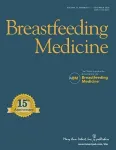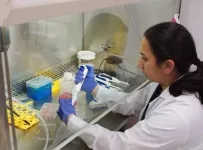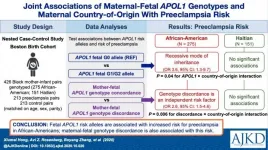(Press-News.org) Scientists have used gene-editing advances to achieve a tenfold increase in the production of super-bug targeting formicamycin antibiotics.
The John Innes Centre researchers used the technology to create a new strain of Streptomyces formicae bacteria which over-produces the medically promising molecules.
Discovered within the last ten years, formicamycins have great potential because, under laboratory conditions, superbugs like MRSA do not become resistant to them.
However, Streptomyces formicae only produce the antibiotics in small quantities. This has made it difficult to scale up purification for further study and is an obstacle to the molecules being taken forward for clinical trials.
In a new study, researchers used CRISPR/Cas9 genome editing to make a strain which produces ten times more formicamycins on agar plates and even more in liquid cultures.
Using DNA sequencing they found the formicamycin biosynthetic gene cluster consists of 24 genes and is controlled by the activity of three key regulators inside the cluster.
They used CRISPR/Cas-9 to make changes in regulatory genes and measured how much of the antibiotics were produced.
CRISPR/-Cas9, involves using part of a microbial immune system to make targeted changes in DNA. Through uncovering the roles of the three important regulators, the team were able to combine mutations to maximise production. They added an extra copy of the formicamycin boosting genes (forGF) effectively putting the foot on the accelerator, and removing the brake by deleting the repressor gene (forJ)
Surprisingly, lifting the brake , ForJ, lead to formicamycins being produced in liquid culture, which previously had not been possible and this was a barrier to scaling up production of these useful compounds. The same activity also led to production of different variations of formicamycins with promising antibiotic activity against MRSA.
"Formicamycins are promising and powerful new antibiotics and we have used gene editing to generate a strain which over-produces these molecules. This will allow us to understand how they work and determine if they have the potential for clinical development," said first author Dr Rebecca Devine.
The priority for the next steps of the research is to further understand the regulation of formicamycin biosynthesis as some of the gene deletions used to achieve the new strain had unexpected effects.
"There is still a lot to learn and we may be able to increase production even further when we've figured this out," said Professor Matt Hutchings, another author of the study and a group leader at the John Innes Centre.
"We will use the over-producing strain to purify enough formicamycins to figure out their mode of action, how they kill superbugs such as MRSA, and why these superbugs don't become resistant. This is vital to their further development as antibiotics," he added.
Streptomyces formicae is a strain of bacteria found in the nests of a species of African ant called Tetraponera penzigi. The ants use the antibiotic producing bacteria to protect themselves and their food source from pathogens.
Half of all known antibiotics are derived from the specialised metabolites of Streptomyces bacteria, many of which were discovered in the Golden Age of antibiotic discovery more than 60 years ago.
In the meantime, few new classes of antibiotics have been introduced, increasing the threat posed by antimicrobial resistance. Antibiotics that can kill so called superbugs like methicillin-resistant Staphylococcus aureus (MRSA) are urgently needed.
Professor Hutchings' group work was carried out in collaboration with that of Professor Barrie Wilkinson at the John Innes Centre. The recent purchase of natural products chemistry equipment due to a successful capital expenditure bid to BBSRC will significantly enhance the ability to scale up production of formicamycins in the next phase of this project, said Professor Wilkinson.
INFORMATION:
Rewiring the regulation of the formicamycin biosynthetic gene cluster to enable the development of promising antibacterial compounds, appears in the Journal Cell Chemical Biology.
https://www.cell.com/cell-chemical-biology/fulltext/S2451-9456(20)30520-1
ITHACA, NY - Invasive round goby fish have impacted fisheries in the Great Lakes and the Finger Lakes by competing with native species and eating the eggs of some species of game fish.
But the camouflaged bottom dwellers can be difficult to find and collect - especially when they first enter a new body of water and their numbers are low and they might be easier to remove.
In a proof-of-principle study, Cornell researchers describe a new technique in which they analyzed environmental DNA - or eDNA - from water samples in Cayuga Lake to gather nuanced information about the presence of these invasive fish.
The study, "Nuclear eDNA Estimates Population Allele Frequencies and Abundance in Experimental Mesocosms and Field Samples," was ...
In a large population-based family study, family history of kidney disease was strongly associated with increased risk of chronic kidney disease.
In this large population-based family study recently published in the American Journal of Kidney Diseases, researchers investigated the familial aggregation of CKD by comparing the risk of chronic kidney disease (CKD) in individuals with an affected first-degree relative to that in the general population. Participants with an affected first-degree relative were observed to have a threefold higher risk of CKD compared to that in the general population, independent of BMI, hypertension, diabetes, hypercholesterolemia, history of cardiovascular disease (CVD), and smoking status. ...
New Rochelle, NY, January 12, 2021--The Academy of Breastfeeding Medicine (ABM) does not recommend cessation of breastfeeding for individuals who are vaccinated against COVID-19. In a new statement, the ABM suggests that lactating women discuss the risks and benefits of vaccination with their health care provider, within the context of their risk of contracting COVID-19 and of developing severe disease, according to the peer-reviewed journal Breastfeeding Medicine. Click here to read the ABM statement now.
This is a challenging topic because the vaccine trials excluded lactating women. Thus, there are no clinical data regarding the safety ...
The body's immune system is the first line of defense against infections like bacteria, viruses or cancers. Some cancers, however, have developed the art of molecular deception to avoid destruction by the body's immune system. However, a University of Missouri researcher might have found a new way to help the body's immune system get past that deception and destroy the cancer.
"Normally, your body's immune cells are constantly on patrol to identify and destroy foreign entities in the body," said Yves Chabu, an assistant professor in the Division of Biological Sciences. "Normal cells put up a 'don't-eat-me' molecular ...
Acknowledging that COVID-19 may be here to stay, Oregon Health & Science University has laid out a series of steps to prepare patients for elective surgery following their illness.
The evaluation, outlined in a commentary published in the journal Perioperative Medicine, is believed to be the first published protocol laying out a COVID-era path forward in American medicine.
"We think this is groundbreaking," said senior author Avital O'Glasser, M.D., associate professor of medicine (hospital medicine) in the OHSU School of Medicine. "We are hoping other clinics and surgical centers can use this to keep their patients safe."
The work started around Memorial Day, when OHSU clinicians began to see an increasing number of patients ...
Fetal APOL1 kidney risk alleles are associated with increased risk for preeclampsia in African Americans and maternal fetal genotype discordance is also associated with this risk.
Preeclampsia, characterized by increased blood pressure after 20 weeks of pregnancy, as well as other abnormalities (e.g., protein in the urine), is dangerous to mothers and their infants. Previous studies found that individuals with African ancestry may carry APOL1 genetic variants that increase risk for chronic kidney disease. This study published in the American Journal of Kidney Diseases (AJKD) found that fetal high-risk APOL1 genotypes and maternal-fetal APOL1 genotype discordance independently contribute to preeclampsia risk in African-American mothers. This ...
TROY, N.Y. -- An analysis of an exhaustive dataset on cells essential to the mammalian immune system shows that our ability to fight disease may rely more heavily on daily circadian cycles than previously assumed.
Malfunctions in circadian rhythms, the process that keeps our bodies in tune with the day/night cycles, are increasingly associated with diabetes, cancer, Alzheimer's, and many other diseases. An investigation published today in Genome Research shows that the activity of macrophages -- cells within us that seek and destroy intruders like bacteria -- may time daily changes in their responses to pathogens and stress through the circadian control of metabolism.
In this study, ...
Organizations seeking to fill internal roles traditionally have two options: promote from within or hire externally. Internal promotions benefit from being vetted talent who possess firm-specific skills while outside hires harbor external knowledge that can infuse an organization with new energy. Though this dichotomy is often accepted as unavoidable, there is a third option: boomerang employees.
Boomerang employees are those who return to an organization after an amicable absence. Whether the absence was for personal or professional reasons, their return provides unique value to an ...
A team of astronomers led by the University of Arizona has observed a luminous quasar 13.03 billion light-years from Earth - the most distant quasar discovered to date. Dating back to 670 million years after the Big Bang, when the universe was only 5% its current age, the quasar hosts a supermassive black hole equivalent to the combined mass of 1.6 billion suns.
In addition to being the most distant - and by extension, earliest - quasar known, the object is the first of its kind to show evidence of an outflowing wind of super-heated gas escaping from the surroundings of the black hole at a fifth of the speed of light. In ...
An international team of astronomers has discovered the most distant quasar yet found -- a cosmic monster more than 13 billion light-years from Earth powered by a supermassive black hole more than 1.6 billion times more massive than the Sun and more than 1,000 times brighter than our entire Milky Way Galaxy.
The quasar, called J0313-1806, is seen as it was when the Universe was only 670 million years old and is providing astronomers with valuable insight on how massive galaxies -- and the supermassive black holes at their cores -- formed in the early Universe. The scientists presented their findings to the American Astronomical Society's meeting, now underway virtually, and in a paper accepted to ...





